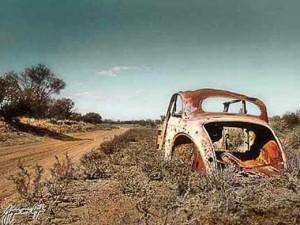Blame rising prices, a weak economy, improved quality or simply the desire to add more vehicles to the household fleet. Whatever the reason, the typical vehicle on U.S. roads is now older than ever – and the number of vehicle has grown by more than 35 million since the start of the Millennium.
If the car, truck or crossover parked in your driveway is typical, it’s now 10.8 years old, according to a new study by the suburban Detroit-based research firm Polk. That’s up a full year compared to 2007, just before the U.S. economy spun into the ditch. At the same time, the data tracking firm reports that there are now 240.5 million vehicles in operation in the country, down about a half percent since the start of the Great Recession.
“The increasing age of the vehicle fleet, together with the increasing length of ownership, offers significant business growth opportunity for the automotive aftermarket,” said Mark Seng, global aftermarket practice leader at Polk. “Dealer service departments and independent repair facilities, as well as aftermarket parts suppliers, will see increased business opportunity with customers in need of vehicle service.”
The new data raises nearly as many questions as it answers. For one thing, industry planners and analysts alike are wondering whether the trend towards ever more cars on the road will continue. During much of the last decade consumers steadily added to their household fleet to the point where there are now nearly as many cars as there are people in the United States.
Some observers caution that this is likely to be followed by a slowdown in demand during the current economic cycle, with the industry falling short of previous peaks that reached into the 16 million to 17 million range.
Indeed, since the economy tanked there have been regular reports noting that sales didn’t come close to matching the scrappage rate – the number of vehicles taken off the road because they could no longer run. That helps explains why the number of automobiles now in service has fallen from the 2008 peak of 242.1 million.
On the other hand, there has been an apparent burst of pent-up demand, in recent months, says Art Spinella, research director at Oregon-based CNW Marketing. That helped drive unexpectedly strong U.S. new vehicle sales during the final months of 2011.
Improved quality is another factor that could play into both the size of the fleet and the age of the average vehicle going forward. Improved reliability could delay the purchase of a new vehicle, meaning still older products, on average – but also fewer vehicles overall.
Another factor that could come into play is the reluctance of new Millennial buyers to get their driver’s licenses. They’re six times more likely to delay that rite of passage than Baby Boomers were, according to Clay Dean, General Motors’ director of advanced design.
While there are plenty of uncertainties, the current trends have been apparent for some time, according to Polk research. The firm notes there were 205.3 million vehicles on the road in 2000, the tally climbing to 232.0 million five years later. The test will come as the economy recovers as to whether a new record is set later this decade.
But 2011 did see a record in terms of vehicle age, at 10.8 years for all motor vehicles, and 11.1 years for passenger cars, in particular. In 1984, the average was just 8.4 years for light vehicles, the figure climbing to 9.0 years in 2002. Surprising few, the average age rose steadily during the Great Recession, from 10.0 years in 2008 to the current record.

